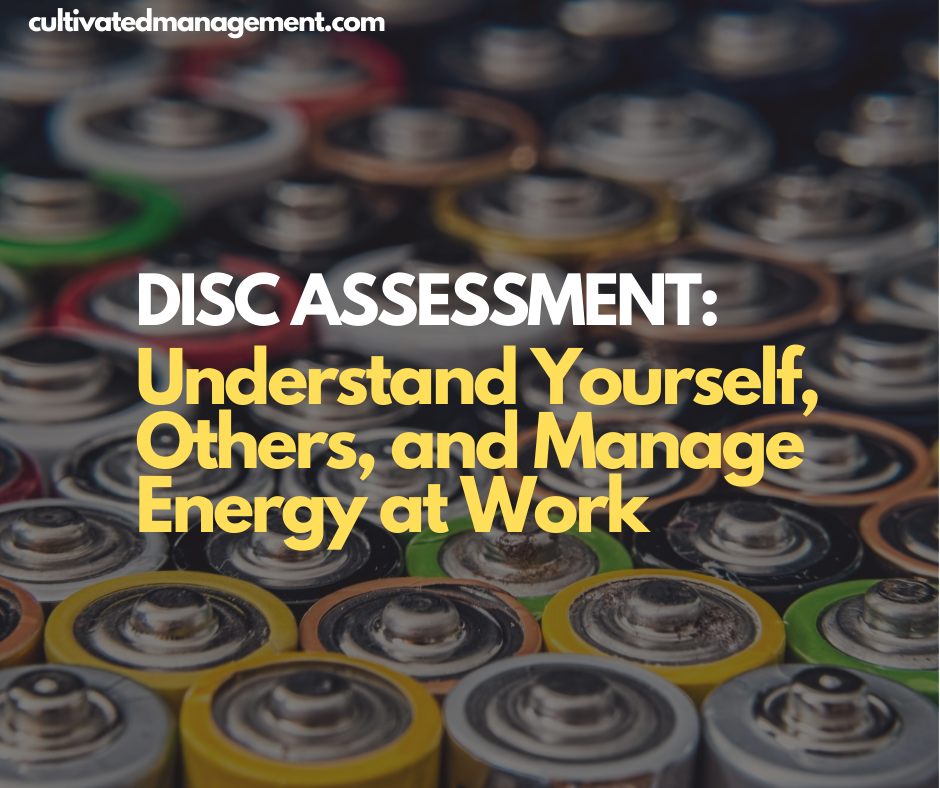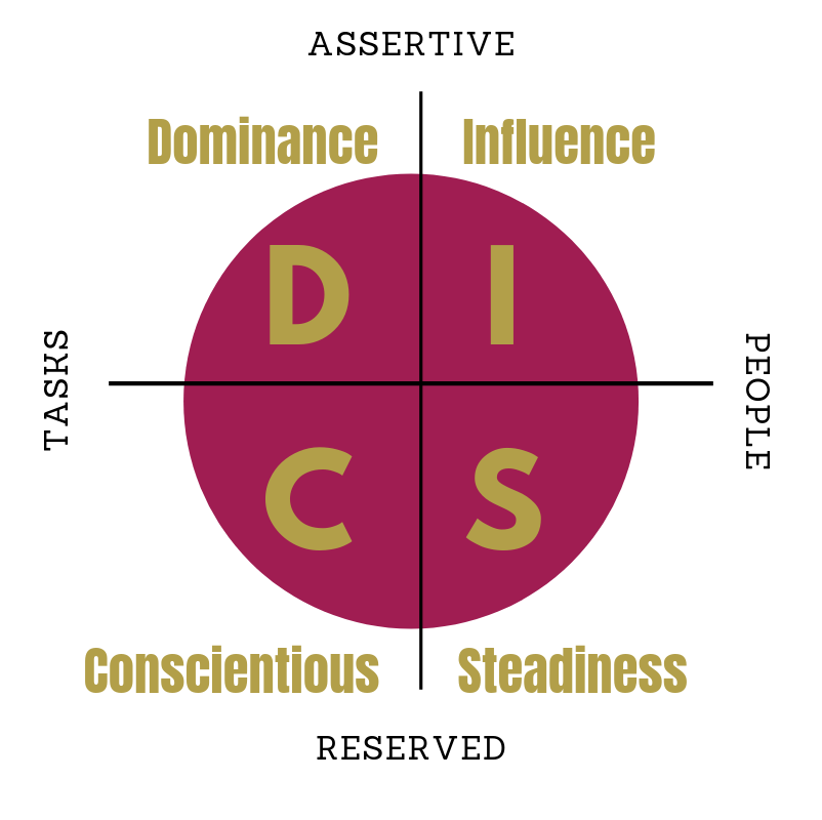
Using DISC to Understand Yourself, Others, and Energy at Work
I’m a big fan of the DISC assessment tool for behavioural and communication preferences.
I’ve used it for years in the workplace — during communication superpower workshops, leadership courses, and one-to-one coaching—with excellent results.
DISC is simple, practical, and surprisingly insightful. Is it 100% accurate? No. But most people remark on how “spookily spot on” their results feel.
Trinity of Effective Communication Bundle: Get Zero to Keynote, Workshop Mastery, and the Communication Superpower course—all in one powerful package.
What DISC Measures
DISC looks at two key dimensions:
- Response to environment – Are you task-focused or people-focused?
- Personal power – Are you assertive or reserved?
From this, it identifies four broad behavioural styles:
- D – Dominance: Assertive, task-focused, results-oriented. Think alpha CEOs, direct and determined.
- I – Influence: Assertive, people-focused, inspirational, motivating, often humorous. (That’s me.)
- S – Steadiness: Warm, calm, supportive, dependable. Brings stability and ensures people are OK.
- C – Conscientious: Rule-following, precise, detail-oriented, likes data and structure.
Most people are a mix, with one or two dominant styles.

How I’ve Used DISC Personally
14 years ago, I was mostly an I — influential, people-focused. Over time, running my own business required me to develop D + I behaviours, to cover strategy, sales, compliance, and leadership.
The point? DISC is not about pigeonholing. It’s about understanding your natural preferences, then flexing when needed — without losing yourself.
There is no right or wrong place to be on DISC. Instead, it is about knowing yourself and knowing whether you wish to flex in the moment, or work on adjusting your natural preferences, by developing the behaviours that move you within the 4 types.
DISC and Energy Management
Energy is finite. Using DISC helps identify where we naturally thrive—and where we burn out.
For example:
- My accountant is a high C—she thrives on detail and rules. Doing events drains her energy.
- I’m a high I—I thrive on influence, leading teams, and public speaking. Spreadsheet minutiae drains me.
Misalignment between your natural style and your work can cause stress, burnout, and disengagement—even if hours and output are reasonable.
DISC in Leadership and Teams
I once ran a DISC workshop for a leadership team in a mobile telecoms company. Every member except the CEO was a high D — fast-paced, direct, action-oriented. The CEO was a high C — data-driven, reflective, and people-focused.
The mismatch caused constant friction: meetings were tense, decisions felt rushed, and the CEO was exhausted. At one point he broke down with the realisation that he was spending his time acting like a D, and it was destroying him.
After analysing the team’s DISC profiles, he made strategic hires: a high I to inspire and motivate, and high S members to stabilise the team. Within months:
- Meetings became calmer and more productive
- Decisions were more balanced and inclusive
- The CEO no longer had to overcompensate by acting outside his natural style
DISC helped the team align strengths, reduce conflict, and improve energy management.
Key Principles of Using DISC
- Know yourself first – Understand your natural style, preferences, and energy.
- Flex toward others – Adjust your communication and behaviours to meet others halfway.
- Avoid pigeonholing – DISC is a guide, not a justification for poor behaviour.
- Balance energy – Match work tasks to natural preferences whenever possible.
- Leverage diversity – Mix of D, I, S, C in teams produces better outcomes.
Final Thoughts
DISC is a simple but powerful tool for self-awareness, communication, energy management, and team effectiveness.
When used correctly:
- People thrive in their roles
- Teams work in harmony
- Workplaces become inclusive, joyful, and effective
And importantly, DISC can help prevent burnout—not through longer hours, but by working in alignment with your natural style.
Recommended DISC Resource
Tony Robbins’ free online DISC survey (note: sign up carefully; you’ll receive marketing emails).
